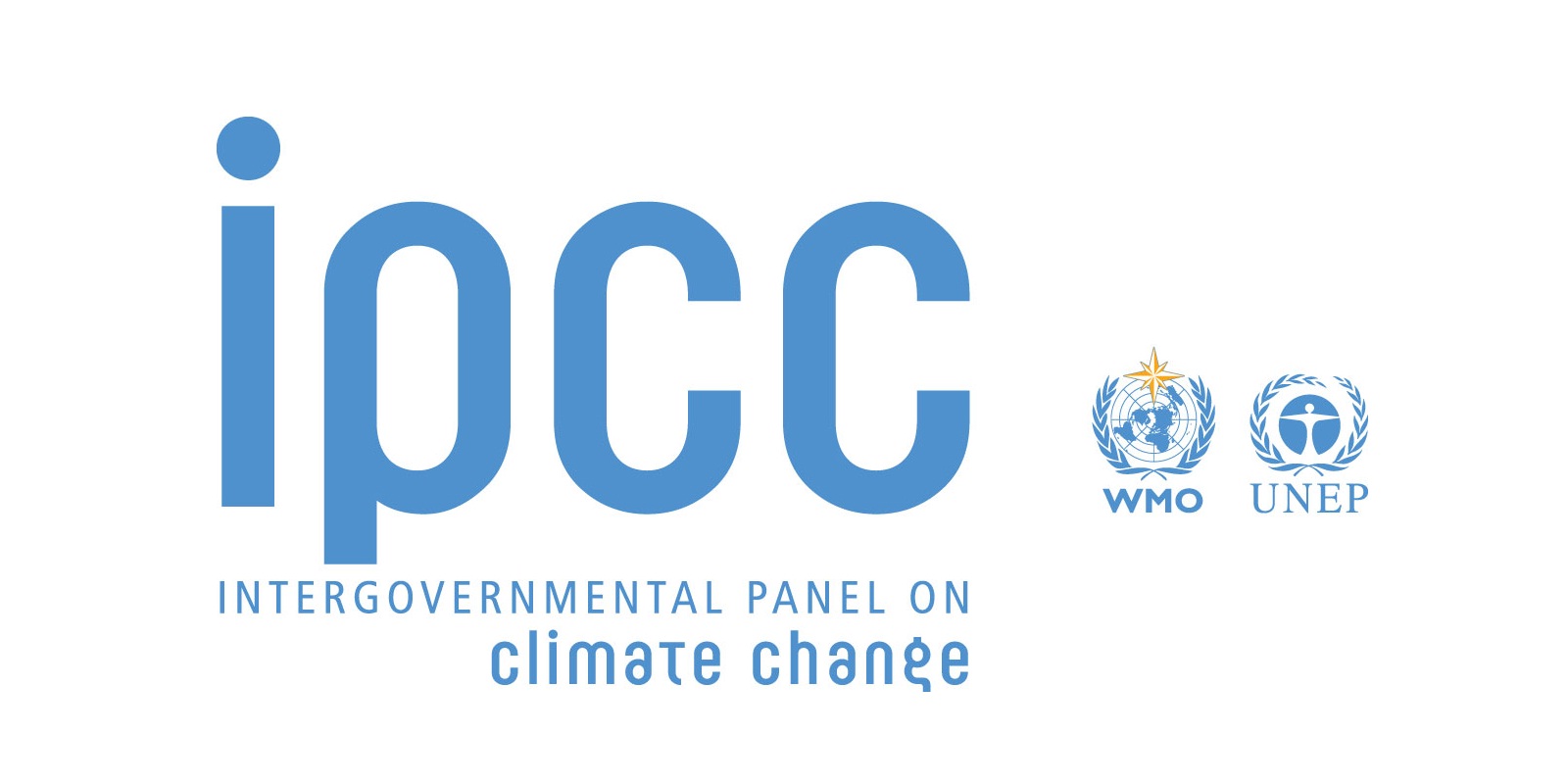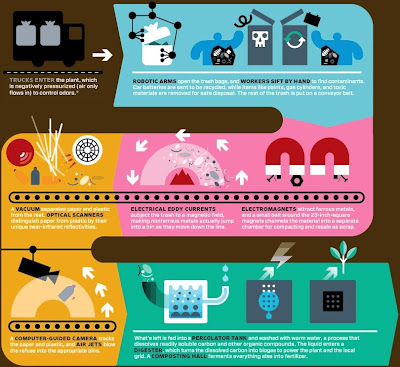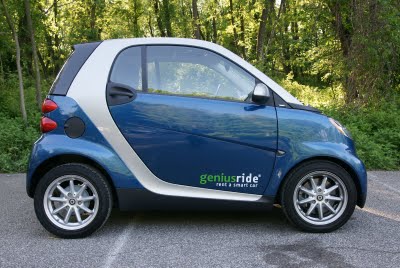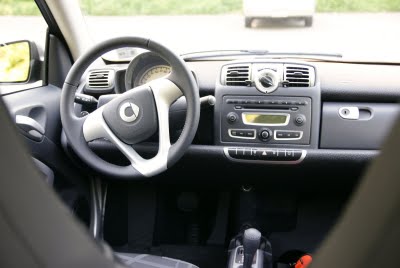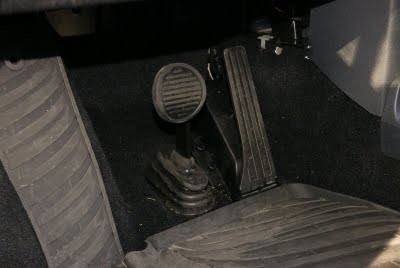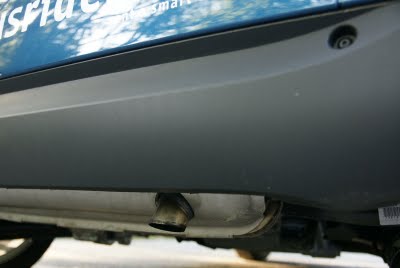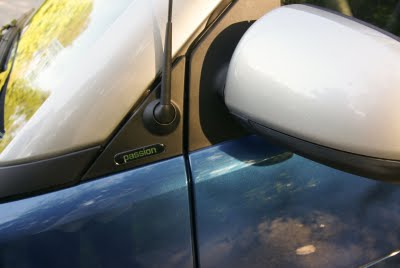The differences between the Democratic party and the GOP continue to dwindle. The Democrats are sponsored by Wall Street, have abandoned the idea of taxing the rich, and have even abandoned questioning the size of the military-security complex. Meanwhile, Republicans are embracing marijuana legalization and marriage equality. The biggest differences left are really Social Security, science, and medicine (the GOP is against all three). Otherwise, that's pretty much it, folks. We can summarize this nation like this: declare war on the world, give every break and perk to the rich people, spy on everyone, and ignore the man-made environmental catastrophe. The longer we keep these two parties in power, the further this nation is ruined. Considering it has been this way for nearly 20 years, it is probably too late to save the USA.
Environment
We Were Warned. We Didn't Listen.
Three months after its publication, this article by Graham Readfearn is still very sharp, and a great reference for all your charming debates with science denyers. I and other authors here at MLH will repeat it forever: the IPCC, by and large, has produced very accurate reports that almost always underestimate how soon tangible changes to our climate will be measured. It seems with each report, changes predicted in the last report have already become a proven reality, years ahead of original predictions.
Graham Readfearn via The Guardian: The hellish monotony of 25 years of IPCC climate change warnings
PhDs In Climatology
All it takes is a few February snowstorms to send the wingnuts into a frenzy over climate change.
But not only climate change. They also went into a frenzy about the weather's impact on job data. Educated people who have been paying attention to business news since 1990 or so realize that stormy weather has been proven to have both micro- and macroeconomic consequences. Weather effects earnings, consumption, spending, production, and everything connected to them in our economy.
They probably don't remember nor care that Enron, once a poster child for 21st century corporate America, developed one of the world's first electronic weather derivatives markets - in which investors and institutions both speculated on what the weather would bring, and also hedged their weather-related exposure. And now the wingnuts are in denial that a series of strong snowstorms can slow hiring? They are hysterical, excitable, violent, dim-witted, anti-intellectual liars.
Green Ways To Recycle Personal / Home Electronics

Thanks to my girl, Apartment Therapy, and MSNBC for passing these along:
YouRenew - get paid (albeit, a little) to recycle.
BuyMyTronics - Will take phones, ipods, game consoles, laptops, and camcorders.
And Apartment Therapy / Re-Nest has this list of trusted electronics collectors from earlier this summer.
A Green Way to Dump Low-Tech Electronics (NYT Tuesday Edition)

In an on-going discussion, here is an article from the New York Times this past Tuesday that gets to the heart of one facet of the closed-loop (cradle-to-cradle) systems that will become of the utmost importance going forward. Businesses that "make" goods eventually will be required to build into their business plans what happens to their goods when their useful lives are complete. Some companies such as Apple, Herman Miller, and Milliken Carpets are already working at honing this responsibility.
See more from map-lab at our LAB.
Wired: Inside the High Tech Trash Disassembly Line
Here's some environmental news I wanted to share. This is my first environmental post since 'Happy F-ing Earth Day'.
There's an excellent diagram in the April issue of Wired. It is also shown here. It illustrates how the cleanest, most advanced waste separating facility works in Sydney. It separates paper, plastic, metals, and organic waste (biomass) for uses outside of a landfill. The gasses released by the organic waste help run the automated facility, and it has technologies that suppress odors. The result is more recycled resources, less landfill waste, and an expensive, but reliable way to separate trash when folks don't put in the effort to do it properly at home. The amount of waste being sent to landfills is increasing. Space in American landfills is shrinking (are so are the costs of adding refuse to that shrinking real estate as demand exceeds space). In fact, some big cities are beginning to pay foreign nations to accept our trash. More alarming, the cost of the fuel to transport waste to landfills is far outpacing inflation. So a facility like this, while costing 9-figures, makes a lot of sense.
The facility is designed and built by Global Renewables, and we can only hope they get a contract to build a similar facility for a progressive US city (San Francisco comes to mind). Oh, and their publicly-traded, and they are cross-listed on RENIXX - the Renewable Energy Industrial Index.
The Smart Car Passion Coupe Reviewed
After nearly 10 years, the Smart Car has finally come to the USA (and nearly 4 years after arriving in Canada). I first saw a Smart Car in 2005 when I was in London. In fact, I saw two models - the ForTwo coupe, and the Smart Roadster, which I thought was an outstanding sports car for those on a strict budget (and didn't mind a less than sports car top speed). Sometime between then and now, Smart even introduced a short-lived ForFour sedan, which seemed to be their best product. But it has been the ForTwo coupe that has been the iconic, best-selling model in their lineup since 1998.
In 2006, Smart's parent company, Mercedes-Benz, announced a redesign of the Smart ForTwo coupe, to go on sale in January 2008. While four models of the ForTwo coupe are offered in Germany, the US has received two models - the Pure and the Passion. I was able to rent the Passion for a 28 hour period.
Before I get into all the exciting details, here is a high-level summary:
Pros:
- Ultra-compact, cute, stylish, well-made minicar.
- Fun rear-wheel drive + tight turning radius = great city handling
- An attention-grabber. You'll make lots of friends and have conversations with strangers wherever you go.
- 40MPG overall is achievable if you drive conservatively and shift perfectly.
Cons:
- With hard pedal action and no power steering on most models, driving can be a bit of a workout. Older drivers should steer clear unless they can find one with the power steering option.
- Audio system is high quality. But only two speakers? They need to double that to four!
- Unless you sacrifice some of the precious 10 cubic feet of cargo space, there is no spare tire storage. Smart car expects you to use the tire repair kit, or call for help if you get a flat.
- Highway driving is never a relaxing experience. The car cannot go faster than 80MPH, making passing a rare occurrence. Stay in the right lane and don't stray too far from home.
The Smart car is clearly not for everyone. Stop considering one if you expect to have more than one passenger, carry more than one standard rolling luggage piece and a large duffel bag, do a lot of highway driving, or are not open to the idea of a daily drive being a calorie-burning experience. If you are OK with the criteria above, and are looking for all of that plus the unique ability to park in more places, and make a lot more friends (and possibly envious enemies), read on.
The Smart ForTwo comes in two trim levels, the Pure and the Passion. The Passion is by far the more popular model, and I think the only one worth considering, given the excellent standard features it adds for a modest price increase over the Pure. In fact, given that the Pure doesn't include a radio, it is clear that it is targeted at the food delivery market. The Passion comes standard with quality features including air conditioning, a lexan, transparent roof, paddle shifting, power windows and door locks, heated electric side mirrors, a leather-wrapped 3-spoke steering wheel, a single-disc CD player and radio with axillary audio input jack (in the glove compartment), and very nice, attention-grabbing, 9-spoke 15" alloy wheels with low profile 155/60 tires in the front, and 175/55's in the rear. If you are patient, you can find some Passion models with a 6-disc CD player (my test vehicle did), power steering, fog lamps, additional gauges, and a hard-to-find comfort package, which adds leather heated seats, automatic rain-sensing wipers, and auto-off headlamps (a must for a forgetful guy like me).
As I practiced lifting my foot off the gas at the start of a gear shift, I made the move to be more pro-active. The Smart Car Passion has a tiptronic semi-automatic transmission with steering wheel-mounted paddle shifting. By flicking the floor-mounted gear shift to the left, you engage tiptronic mode. A large gear indicator in the instrument panel shows the current gear as a large LCD numeral, which changes to a big up or down arrow when it is time to execute a shift. Unfortunately, there is no option to accompany the arrow with a audible alert. Of course, I wouldn't need an audible alert if I had a tachometer. But that's an option that was not installed on my car. But I figured it out. If I drove with the radio off and got to listen to all the sounds the car made, I got it to run smoother, accelerate better, and even get into the middle lane of the Major Deegan (I-87) to do some passing.

 Plastics are good for the price, and put Chrysler / Jeep / Dodge to shame. Window and mirror controls are taken directly from a previous Mercedes C-class model.
Plastics are good for the price, and put Chrysler / Jeep / Dodge to shame. Window and mirror controls are taken directly from a previous Mercedes C-class model.
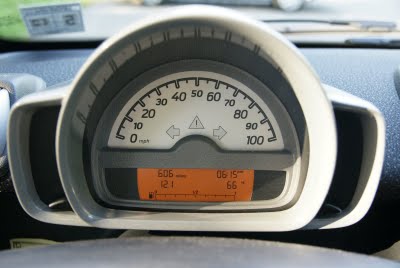 No engine temperature gauge or tachometer here. A pair of sporty, dash-mounted instruments are optional ($130).
No engine temperature gauge or tachometer here. A pair of sporty, dash-mounted instruments are optional ($130).

"Does that run on gas or electric?"
"How fast can that go?"
"Can you take it on the highway? Is it scary on the highway?" (They laughed when I said, "Stay in the right lane.")
"What's the fuel economy?"
The reactions from pedestrians were priceless. I had people pointing, waving, laughing, and running-up to ask me questions. I heard comments like "cool," "smart," and some chatter about gas prices as I drove by with my windows down. In particular I spoke to some Latino youths in Red Hook who spotted me from 50 yards away, and ran into the street to ask me all sorts of questions. One expressed interest in renting it for himself. And another expressed an interest in seeing two Smart cars in a street race.
In Inwood, a guy and his girlfriend pulled-up on my left on a two-way street to tell me that it was "so cute" and that they want to rent it this summer.
In Times Square, I had bunches of people waving and giving me a thumbs-ups I slowly rolled around Wednesday at midnight. However, two big, seemingly drunk men on West 42nd Street weren't so happy to see me. They crossed 42nd Street in between 10th and 9th avenues to take swipes at the car as I sped past. One of them slapped my right side mirror into its folded position, but thankfully didn't leave a mark. I can only assume that was a rare occurrence, but a unique car attracts unique responses.
The USA version of the ForTwo is powered by a Mitsubishi 3B2 engine, the same aluminum block engine that powers Mitsubishi's successful 5-door minicar, the "i". However, the heavier Mitsubishi vehicle is powered by a turbocharged version of that engine. In the Smart ForTwo, the 1-liter, naturally-aspirated 3-cylinder engine generates a modest 71 horsepower.
While the engine does not rev any higher than a comparable 16-valve 4-cylinder, the heat generated by the engine can be felt in the cargo area after an hour of driving or so. It was warm enough to gently heat my groceries during a late-night run to the Fairway supermarket in Red Hook. I wouldn't advise putting milk or ice cream in the cargo area for more than an hour of driving. At the very least, get an insulated cargo tote, since items in the cargo area will bounce around, even during gentle driving around town. When I went to the rear hatch to retrieve my groceries, I noticed something else. Because the hatch is directly above the tailpipe, I got a whiff of both engine heat and exhaust. It smells a lot like a motorcycle...or lawn mower. Not a danger, but something I am not used to in a regular-sized combustion-powered automobile.
Thursday morning at 05:00, the car was where I left it, undisturbed. I did what I intended to do with the car in the first place. I rented it so I could pick-up my girl from JFK and take her out for breakfast and a drive. I took it to my local car wash. As the workers there laughed and giggled, I rode through the car wash and most of the brushes made contact with the rear window of the car. So it passed the car wash test. Just be sure to remove the radio antenna before going through.
As I completed a tight parallel parking maneuver in front of my building, my girl asked, "Where's the spare tire stored?" I replied that the car didn't have a spare on-board. We agreed that was a big sticky point. Probably a deal-breaker.
Apparently there is a 12-month wait list for the Smart ForTwo at Smart Car of Manhattan. Geniusride, which is based out of the Englewood Mercedes dealership, says that they can import a Smart ForTwo in a matter of days at the sticker price ($14,000 for the Passion, about $14,500 for the model I drove with the 6-disc CD player). Geniusride is a car rental company for the Internet era. They accept payments via PayPal and soon they will have an online reservation system.
At $80 a day ($90 on weekend days), a SmartCar rental is the best way to test drive the ForTwo. You have to spend a full day with the car to master the handling and driving techniques.
A rental is worth the fun and discovery. But a purchase? You would have to weigh the pros and cons carefully, as well as check out these larger vehicles. While none of them can match the ForTwo's 35-40MPG overall fuel economy, all of them are priced at or under $15,000, carry more cargo, and carry a spare tire. They include:
- Chevy Aveo 5-door ($13,000)
- Ford Focus 4-door (Base) ($15,000)
- Hyundai Elantra GLS 4-door ($14,000)
- Kia Spectra 4-door ($14,000)
- Honda Fit (Base) 5-door ($14,000)
- Scion xD 5-door ($14,000 with no option packages)
- Suzuki SX4 AWD (Base) 5-door ($15,000)
- Toyota Yaris-S 3-door ($15,000; $12,000 for the Yars base model)
- Toyota Matrix 5-door ($15,000 with no options)
Like the late 1970s, we are seeing an increase in the number of small cars on the market. Japan keeps the most beautiful specimens in its home market. But that might change. More American consumers have to do what European consumers have had to do with rising fuel prices, and that is embrace the hatchback. As the price of gasoline is expected to rise indefinitely to $4 and $5 per gallon and beyond, we should see more sleek, fuel-sipping hatchbacks. The Smart is about as small as a combustion-powered hatchback can get. In order for it to feel at home, a lot of people will have to buy it. In environmentally-conscious Manhattan, that won't be a problem. But we may never see European hatchbacks in Indiana.
Then again, considering this morning's news from GM, we might see more tiny GM hatchbacks like the Chevy Aveo. Hummer might be finished as a mass market brand. This is big news.
In some respects, the Smart ForTwo is a preview of cars to come. Manual controls and a minimum of electronics all contribute to a lighter car that saves energy. Today's electric cars have similar characteristics, such as a lack of power steering. My first car could conceivably be an electric hatchback. Instead of lamenting the loss of luxury car conveniences, I should look at the Smart as a training vehicle for the electrics that will hopefully come to market.
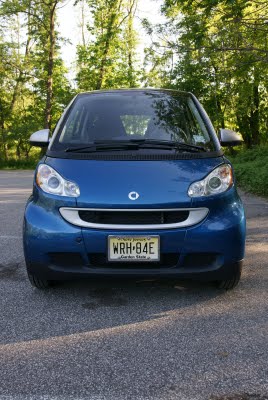
Happy F*cking Earth Day…State of the Nation and Beyond
By Archytype
Introduction
I suppose many of you have heard my rants and ravings about these things for a number of years. Yes, I am a greenie. Perhaps not the absolute devout that some may be, but my biggest contribution I can make to the cause is to keep getting “smaller” as far the impact goes while getting louder (perhaps my biggest “asset”) where those that
need to hear will hear. There will be many chapters and all of them will be revisited from time to time. But this is to remove the veil and the passivity that pervades this discussion. Kid Gloves will not be employed here….
In the eyes of a vast majority of Americans, environmentalism is the realm for the pot-smoking vegans in Northern California who ride solar-powered bikes to the organic wine farms or the 60’s draft dodging cast offs who really hate America anyway (love it or leave it, man) and apparently want to destroy it by advocating for smaller cars and higher fuel standards….FUCKERS!
Well, ummm….perhaps not. Environmentalism is THE new economy. En Vogue! Tre Fab. Its HOT. Al Gore is making fucking movies for crying out loud so it must be real right? Leo-D drives a fucking Prius, shouldn’t we all? Well, hang on a moment. Leonardo DiCaprio and ESPECIALLY Al Gore isn’t in the position to change anything really. Al isn’t the President (he lost…or whatever the hell happened in 2000, the year we all got fucked!). He is a Hollywood shill now. So he is no more an influence for the environment than Michael Moore is at changing the auto industry practice of destroying communities that depend on their income. Remember he DID fucking FLY to the Live Earth Concert. So did Leo. And so did every "artist" that performed that day. They bought green carbon offsets though.
Ah….blood does wash off don't it?
So with that I will begin the (hopefully) regular piece to this blog with the open shot across the bow. Warning….I don’t censor (starting right after the title…). Fuck you. If you can watch my fucking planet rot in place as you get into your fucking SUV post-your 5 min yoga while sipping slave-waged-picked lattes from WhereeverBucks backing out of the driveway of a 4400 sf house you and your fucking yapper dog live in, then you sure as shit are in no position to curb my language.
And for Christ sake pick up after that little fucker!
Chapter ONE - Food For Fuel
Roger Cohen: Bring on The Right Biofuels (NY Times - registration required)
As I keep saying....apparently to the void, we (the collective jingo-centric A.D.D. voting stock of Americans) have absolutely no idea what we are doing anymore. Leaves on streams. Rice, soybeans, and corn are the most abundantly grown crops in the world. They are also a large part of the problem. They come at the expense of biodiversity, a key to the planets ability to combat a number of things including specie extinction (us included). But then again, at least its food for fuck sake. As soon as you begin taking farmland that should be dedicated to producing food for an ever expanding world population and giving it over to t producing a crop source for fueling our transportation and energy needs you begin to see why so many in the agricultural world and the organizations that deal with issues in third world countries are in full bloom panic right now. We cannot feed the world with what we currently grow, so let’s chop the food production by 35-40%? And this doesn’t alarm people?
"But wait are you saying that we should stick to oil?"
No. I am not saying this.
"So, Ethanol is good right?"
Indeed, it is a good thing to reduce the extraction of oil to burn in terribly inefficient cars, yes.
My turn to ask questions, so why do you think we should turn to ethanol?
"I dunno."
So burning our food, doesn’t this sound like a bad idea?
"Maybe….but what do we need with all that corn anyway?"
………………………………………………………………………………………………………………………………………………!
The Boston Globe: Proposed Wind Farm Draws Few Foes In Hull
For the benefit of diversity (and economy competition, something that drives prices down…garsh!) we can look into a number of different and sustainable energy producing means such as the highly contested wind strategies and others like the tidal technologies that are now available and ever developing that may alleviate some of the major drawbacks from the wind powered infrastructure.
For one, I think the general public could use another option (and given our geographical and geological advantages, why not) and additionally competing technologies push for innovation to advance more quickly as well as gain access to a wider array of funding opportunities not to mention become more affordable.
These are good things in a world of perpetual increases in energy costs.
But worse is embracing any one idea that would rob Peter (oil) to pay Paul ("eco-fueling") in lieu of two major pieces of shifting:
1. Conservation.
- Mandatory efficiencies for ALL forms transportation and not token responses to quell the eco-crowd roar. I am talking NO car under 60 MPG and Nothing BUT hybrids to start.
This is the REAL discussion that should be happening at every possible turn. Our ridiculous appetite for energy. I realize that this has been discussed in dribs and drabs but satiating the appetite only prolongs the illness. That illness is the REAL issue. The illness being our lack of restraint and conservation. As someone who was asked (on behalf of the Boston Society of Architects - Committee on the Environment) back in 2001 to review the forthcoming National Energy Policy, I was struck by the fact that there were no mandates for scaling back use (from the lack of public transportation funding to overall self-discipline measures). We just keep throwing money at ideas to deal with the ever expanding need. Things have not changed in the 7 years since its release. As we may already know things are much, much worse.
Of all things, that is the least sustainable strategy, no matter how "green" the technology gets.
Another HAS to be a look at how we do things. There is something absurd about sitting in two-hour traffic jams flying solo listening to NPR yelling, “right on” to reports on energy crisis and want to remove us from Iraq.
2. Localized Mass transit investment.
- READ THIS: BUSES are bad. Why? They sit in traffic with everyone else. Why is this so hard to understand? Make transit actually efficient and people will use it. Cities will densify logically.
I know, trains are about as reliable as the ability for our President to properly read a teleprompter, but fuck is it not a good idea to put a bit more thought into your commute? That brings me to one of the tenants to a truly sustainable strategy, transit. Public transit especially. We collective look at the 3rd world as lesser, but they also have a lot right. They do not have access to capital the way we do so that has to be clever about it. Use mass transit to move people who cannot afford autos. It is their necessity. It is ours.
These were the two giant holes in the 2001 National Energy Policy. It was great at putting the “cards on the table” but very bad a advocating real solutions to the UN-sustainable thirst for energy. It started with the excused requirement for energy plants (particularly in RED states) to put scrubbers on the stacks. That was 2001; the requirements still have not been restored.
Chapter TWO – Green is Still Greed….and greed is still good.

The Chevy Volt concept car, 2007
So GM wants me to believe that they never really killed the electric car they just thought the market wasn’t right? Hmmmm. Interesting, didn’t they CRUSH all the cars? They did. They didn’t give them to communities of the poor, to perhaps stimulate interest and educate the public at the roots about technology that could be extremely affordable for those who may be interested in things like, oh say, affordability.
Nope.
They Fucking crushed them.
Did I mention they crushed them? They fucking crushed them. Crushed. Am I clear? CRUSHED. Not donated, not gave away. Nothing. This is as fucking mind blowing as ANY network not picking up Arrested Development after that shit-stain network FX (Fox) dumped it. Destroyed any trace of them.
But wait, they are trying again. Oh its OK then. Forgiven. I want to give thanks for your advert in The New York Times magazine announcing how fucking green you are. I am sure it has nothing to do with the ever exponential quarterly losses you are taking for market share.
Since the 1970’s energy crisis, which looks like fucking child’s play compared to now our collective fuel economy has worsened. Worsened. How? Well, sure cars got bigger again. That’s what we Americans are all about, bigger, better faster. Like the environmental degradation. We are the best. But hey at least China is catching up and soon will pass us faster than the jobs our American companies gave away to them in the name of that all American capitalism.
Fuck, thank GOD (no, no please, thank GOD….) Wal-Mart is open 24 hours.
Still think we are free? I know, Bitter party of one?
No. I am not bitter, I love getting fucked in the ass with a steam locomotive and not given the courtesy reach around. I guess I just have standards. Jeffery, Love me.
Chapter THREE – I love my country, but I don’t trust our government.
Here is all the evidence we need that our government and George Bush (who doesn’t just hate black people, he hates all people) is out to get us. And by us I mean anyone NOT invested in carbon-based fuel investments.
The Boston Globe: EPA Scientists Compliain About Political Pressure
So the EPA was strong-armed? Huh, really? Come on? This is all very shocking. America (and the rest of the sycophants that emulate us) continues to have that 4 year old mentality, if I just pull the covers over our heads the big bad stuff will just go away. Well, guess what? It won’t. But at least they won’t have to do much to wrap up the bodies, just look for the television sets in their homes.
Yeah, it’s the fat lump in the barker lounger that was reaching for the remote when they gasped their last breath.
Chapter Four – So where do we go from here?
I know, I know….this sounds horrible. I am being an alarmist. How terrible of me, please allow me to apologize. Oh wait, its fucking true. These things are our future.
FUCK THE CHILDREN, Whitney!
Its not being an alarmist, its just plain ole fucking alarming how little we ALL COLLECTIVELY DO NOT GIVE A SHIT about our own well being and future. NONE. How inspiring are we all that we ALLOW the government WE ELECT to strong arm the very oversight bodies charged with protecting our and the planet's health, safety and welfare for the sake of glossing over how bad they have fucked us over the years?
How proud we all must be….a government of the people...for the people….by the people.
Wow.
We suck.
Where is the fucking ribbon for that to put on my fucking car?
Hey, someone cue Lee Greenwood!
2007 UN Human Development Index: Africa Remains The Forgotten Continent; Climate Change Now Clearly Visible Worldwide
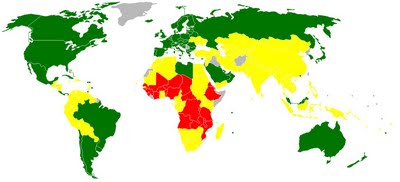
The 2007 UN Human Development Index has been released today. You can read a summary and download it here.
The Human Development Index calculates algorithms that factor-in life expectancy, literacy rate, school enrolment percentage, and GDP. The results classify nations as developed (green in the Wikipedia map above), developing (yellow), or underdeveloped (red), and also provide a simple scale measuring overall quality of life.
News reports today focus on the index itself, which is the ranking of nations. Iceland has taken the top sport for the first time since the report was created by economists in 1990. But the full 300-page report spends a great deal more time talking about climate change, as it is the biggest risk facing underdeveloped nations. Looking at the index, it is clear that the nations of the northern hemisphere consume far more resources than the nations in the south (Brazil, Australia, and New Zealand being major exceptions). And since most of the world's countries are north of Equator, let's try to be fair and say that the south begins around 10 degrees north latitude (so anything south of Nicaragua / southern India / Philippines is "south").
This report ties that division to the issue of climate change, which will drastically affect more people in the south than in the north. Not that the north will be unaffected, of course. But the entire sub-Saharan region, Bangladesh and Sri Lanka, plus parts of southeast Asia and Micronesia / Oceania are at grave risk due to shortages in fresh water and a rise in ocean levels.
So the warning bells continue to sound for our planet.
Honda Brings First Hydrogen Fuel Cell Car To Market, With Restrictions Of Course
One Of The Last Taboo Arguments: Human Overpopulation Is Bad For Planet Earth


One can write a book about this subject. But given the recent attention to Alan Weisman's book The World Without Us, it is time for this blog to add its two cents.
First, a tangent, something I have difficulty avoiding when embarking on a long post.
----------------------------------------------------------
Now I try my best to ridicule and attack people known as Wingnuts. These are people who make irrational, usually right-wing or even fascist arguments covering a wide range of subjects, and often combined with angry, personal attacks on their opponents. They often embellish or exaggerate the threats, problems, and dangers they see around them.
They write scathing opinions about 'dirty hippies' (i.e. people who were against invading Iraq), Mexican immigrants, the unfounded desire of militant Muslims to conquer the west and enslave its women, the exaggerated threat of bigger terrorist attacks happening on US soil (they seem to frequently fantasize of left-leaning, coffee and wine drinking cities like Seattle and San Francisco being destroyed), and our offensive and shameless pop culture (and its role in weakening us for an incoming Muslim invasion). They use equally angry and irrational arguments to defend Bushworld policies like wiretapping, rendition, indefinite imprisonment, and torture. Simply put, they are fascists who write like eigth graders, cheer the people who run Bushworld, and are almost always wrong about everyhting.
Most have blogs. They write books. They write for magazines and newspapers. Some have radio or TV shows. The most educated ones are hired by right-wing think tanks and groomed to become policymakers and lobbyists. Some are regarded as scholars and experts on various topics and appear on cable news shows. As a result, they are usually paid more than more rational writers of the same age and demographic. They have names like Ann Coulter, Dinesh D'Souza, Jonah Goldberg, Michelle Malkin, Rich Lowry, Debbie Schlussel, Bill Kristol, John Podhoretz, James Lileks, Dennis Prager, Megan McArdle, Professor Mike Adams, Pam Atlas, Ace of Spades, Confederate Yankee, Andy McCarthy, Ben Shapiro, Sean Hannity, Glenn Beck, Glenn Reynolds, Michael Medved, Maggie Gallagher, Dan Riehl, Jill Stanek, Jeff Goldstein -and those are the ones I can name right away. Since the rise of the original contemporary Wingnut, Rush Limbaugh, there has been the development of a Wingnut industry.
You can even see young Wingnuts developing in the Wingnut farm system. One Wingnut farm is the magazine formerly known as The Atlantic (look for Matthew Yglesias and the already-mentioned Megan "I've only been a journalist for a few years." McArdle under the "voices" menu). It's a Wingnut incubator over there. They aspire to be famous pundits someday, writing about Important Things, and appearing on news networks saying Important Things. Yup.
As the links above suggest, I think greatest website to learn about Wingnuts is Sadly, No!
Calling All Wingnuts is also very good. Jesus' General is great. Actually there are a ton of blogs that attack Wingnuts. Hmm. There is a non-profit left-wing blogosphere thanks in-part to the well funded Wingnut industry.
I'm mentioning this because what I'm about to write about could get me labeled as a wingnut. So I have to keep this as rational as possible. It's not like walking in a minefield, but it is a slight risk. So here goes -
----------------------------------------------------------
In 1907, the world had close to 2 billion people. Today it has 6 billion. By 2050, it is expected to have 9 billion.
(Yeah, I know you know where I am going, but you've made it this far, so hang-on).
In the last 100 years, the levels of greenhouse gases have risen even more dramatically. The scientific consensus is that CO2 emissions account for most of the global warming trends we have observed over the last century. And while it is true that we are still exiting a relatively recent ice age, the rate of polar ice melting has dramatically accellerated alongside human industrial activity, especially coal burning for electric power. As a result, sea levels could rise between 6 and 30 inches this century, depending on whether the glaciers in Greenland melt, the ice in Antarctica melts, or both.
Now it would seem obvious that since the dawn of the industrial revolution in the 18th century, growth in human population and greenhouse gas emissions are interrelated. But we require science to to prove that. So far, the scientific consensus agrees that human industrial activity, the rise of developed nations, human population growth, and accelerated global warming are all related.
And I am not even going to get into early species extinction, which scientists have extensively studied and argued that human development and industrial activity is shrinking or destroying wild animal habitats.
Assuming that the scientists are correct (and people like Chris Mooney will argue that they are), then how should environmentalists address the need for us humans to change lifestyles in order to slow the damage being done to our planet?
There are so many ways. Here are just a few -
1. Advocate recycling. This finally caught-on in the 1990s after a 20-year effort to do so. Some of us, including me, thought that recycling would be the biggest hurdle to cross, but in fact it is a comparitively small hurdle, and it is not nearly fully-mastered nor implemented.
2. Advocate less energy use. This is slowly catching-on in the G7. Compact fluorescent light bulbs, while containing mercury, do use less electricity and last a lot longer than conventional light bulbs. Sales of CFLs have risen sharply in the last 3 years or so, and I myself have begun to buy them. Their use in the European Union has caught-on fast since the 1990s.
3. Invest more in renewable energy. Wind, solar, hydro-electric, and new hydrogen-based fuel cells for automobiles are all making advances in their use and practicality. Much more needs to be done - beginning with a promise that is yet to be made: Not one more coal-burning power plant should be built in the developed world. That is a promise no one here can keep yet.
4. Make cars more fuel efficient. Hybrids are nice, it would be nicer if every 4-cylinder car got 35MPG or more. I love 4-cylinder cars. They dominate the streets of Europe and come in many flavors to suit just about every taste. But the four-banger I dream of owning, the Subaru Impreza WRX, only musters 25MPG. Now while it is not an SUV, we ought to have the technology to get more miles out of a small sports car. Legislation can force the issue on carmakers. Of course, I could reduce my need for speed and aim for a car with less horsepower. The non-turbocharged Honda Fit gets about 35MPG, for example. The new Scion xD also musters 35MPG. Even the Mini Cooper provides fun and a guilt-free economy rating. Cars with better economy are out there, but they are still in the minority. Until we get practical hydrogen fuel cells in our future zero-emission cars, we should aim to get only as much car as we need, and only use them as much as we need. We can still make a car reflect our personality, but ideally that should not include a desire to ruin our air quality.
5. Make buildings more energy efficient. Most of the electricity consumed by our cities is used by big buildings. We can reduce our electricity use at home, but we need to tackle inefficient or wasteful power consumption by our commercial spaces. Shopping malls, airports, and office buildings can all be much more energy efficient. But that requires new engineering and new architecture that developers and owners need to embrace. There is a fight today to get more capitalists to build green-certified buildings, as as my friend Archetype has written here, it is a serious and frustrating struggle.
6. Eat less meat. I am guilty there as I resumed eating burgers after a 10-year hiatus from beef in 2003. The developed world's appetite for chicken and beef has increased chicken and cow populations dramatically. This adds to inhumane treatment of livestock and massive increases in methane, which is a greenhouse gas (as bad or even worse than CO2 depending on which scientist you listen to).
But there is a taboo subject most environmentalists dare not touch. It would be the next logical item on my list (or at least be further down the list after many more suggestions). If there are too many chickens and cows in the world, farting greenhouse gases into our atmosphere, then what about us? Isn't global warming tied to our numbers? Aren't we carbon-based creatures with big carbon footprints?
Which brings us back to global human population.
You can see where this is going. I'm going to touch the taboo subject that suggests that there are too many people on this planet.
I'm not suggesting a cull. Nor am I hoping for a calamity that kills millions. I am nothing like those who obsess over the book of Revelation. I never advocate limiting the number babies we can produce. To see where I am coming from, read my comments at Slate.com here.
I think I made sense. I know I offended a mother of several children who responded.
I'm going to try to state again what I think. A list might be best.
1. We know that with higher human populations, the higher the potential for massive calamities and disasters. The bigger the aircraft, the bigger the accident death tolls, for example. The more dense the population in a flu pandemic, the higher the death tolls. The more dense the population in an area hit by an earthquake or typhoon or tsunami, the same thing.
We can't predict the future, but one popular prediction for the 21st century is that we could see some very deadly pandemics in the third world. The Ebola virus in Africa is a small yet very frightening example. Certainly the notion of a modern plague is a popular theme in literature. Earth Abides, The Stand, and The Road are three popular examples in the last 60 years. But lets stick with science. Science says that we may see an increase in pandemics this century. While the jury is still out, there are historical precedents we can look at. While the threats may be over-hyped, SARS and Avian Flu opper glimpses into future virus challenges, while on the microbe side, we have seen alarming resiliency and survivability of so-called 'super-bugs.' There are many warning signs, as outlined in books in the past decade such as The Coming Plague.
But the bigger picture is that fundamental resource shortages are tied to disease. The world's fresh water supply is shrinking, and of course, it is the third world that suffers the most. Over 5 million children die each year, mainly from preventable diseases, and many of them from water-based disease and/or lack of sanitary drinking water, which can lead to cholera and diarrhea. About 1 million of these deaths occur in India each year alone.
Now couldn't you make the argument that overpopulation is one reason there is such a large loss of life? Just stating what seems to be a fact. The bigger the population, the bigger the numbers all-around.
2. It is highly likely that rising sea levels will cause a phenomenon contemporary history has not seen before - massive environmental refugee crises. The most likely site of such a crisis is in southern Bangladesh, where millions of people will probably have to move many miles north sometime during this century. Many of the old and the sick among them will die. Disease might spread. Fresh water might be scarce. Famine might even ensue. A refugee border crisis with the Indian state of Bengal might also occur. Isn't it fair to ask if this pending catastrophe is linked to global warming, which in-turn is linked to human overpopulation? Again, I never blame the victims of past, present, or future calamities. It is not their fault that they might have to pack-up and move north. It's 'ours', right?
Now given these two types of 21st century calamities -more disease and rising sea levels, both coupled with a shortage of fresh water- shouldn't honest and logical environmentalists address the relationship between global warming and a human population that has tripled in just 100 years?
I think so.
I think the most 'ideal' environmentalist is someone who doesn't own or rent a car, doesn't eat meat of any kind, uses as little electricity as possible, walks as much as possible.....and also takes into account the effects of reproducing.
In an ideal world, a couple would not produce more than 2 children together.
I advocate not population control, but family planning. I advocate Zero Population Growth. This organization can help you to learn more about it in a rational way.
This is not a war on families. This is not an anti-religious initiative. I completely understand that in some religions, the production of 'as many children god will give' is strongly encouraged. I am an atheist, but I am not immoral or insensitive to anyone else's religious beliefs.
And looking over my comments at Slate, I should advocate something that is very, very green: adoption.
That might be the greenest thing you can ever do in your lifetime. You are saving a life, and you are not making a net addition to the world's total population at that moment in time. Of course, you will probably increase the adopted child's carbon footprint by raising him or her in the USA, and especially if he or she owns a car someday. Daniel Engber makes that argument. But I would add that there are plenty of kids who need homes right here in North America already.
Given this definition, would Brad Pitt and Angelina Jolie fit my ideal? If you took away the excessive travel, private jet, and extra vehicles, I'd actually say yes....sort of.
I don't advocate creating a model UN in your house by shopping around Africa and Asia for babies. But adoption can be a great thing.
And a side point - if they are setting-up a model UN, then when the hell are they going to get a kid from South America? That continent needs representation in the Pitt-Jolie family.
The issue of overpopulation needs to be addressed. We need to get it out of the closet, so to speak.
Live Earth And Other Circle Jerks
It's official. I will no longer attend ANY "green" events. You know what I mean, these self-important, self-righteous, self-absorbed, do-gooders who want to tell me that either things are really, really bad and I have to change or that they are really really trying hard and here is the evidence in which a 100-slide PowerPoint presentation outlines everything they have done to protect the environment or at least identified the problems that all these other people have the change (as was skillfully pointed out at an EPA seminar on green building I attended this week). Where is the ownership to this issue? Where are the real leaders?
All I have to say to all of them is, GO FUCK YOURSELVES!
"Compiling the data is hard… it takes time"
"Changing behavior is hard… it takes time "
"Changing policy is hard… it takes time "
Nope. None of those are hard. Complicated? Perhaps, but not hard. There are many things about this issue that are hard. But let me share something that is really very easy, simple in fact.
A collapsing eco-system. Very easy.
Doesn't need consensus.
Doesn't need further research.
And now that we continue to sit on our hands with half-measures at best and a whole gaggle of rhetoric, here is another thing it doesn't need, time.
Time is no longer of the essence. As Living Colour once sang, Time's UP!
Look, I like Al Gore, we should be having retrospectives on his two-term Presidency at this point, but he is part of the hypocritical problem. The time is well past. Happy Earth Day, folks. Al and the many disillusioned thousands (millions?) who attended or watched the Live Earth "festivities" all must face some facts here. We, the people, do not have a say in our future. The rich and, subsequently, the powerful, which have always had that say, will determine our fate. And they give less than a shit about state of the planet. An inconvenient truth? Indeed. Inconvenient because we fat, lazy citizens might have to walk to work. We might have to drive smaller cars or live in smaller houses or even GOD FORBID, use less electricity. Wait, that sounds strangely like sacrifice. Apparently, all you good Christians leave the sacrifice to sons of God and the like.
Well, we reap what we have sown. And we have sown a wonderful world where nature is going to make it really easy for us in the not too distant future. I love the gun-to-the-head analogies. Hey, that only works if people actually know it's a gun and not a finger with the thumb mimicking a trigger. Nature has the gun and has held it to our collective heads for a long time now. But we all look up and obliviously smile like it's all just a big joke. We all have that Iraq-War-George W. Bush-Press-Conference look on our faces. Well, ha-ha…..BOOOOM. Yeah, fucknuts, that's your brains on that wall back there. Nighty-night.
I am an architect, which puts me on the front lines of this debate. Buildings are the number one consumers of energy (the key player in the environmental debate). This means that I am both the uniter and the divider. I let this shit happen. Why? Because I am too afraid to confront superiors and clients with cold hard realities. More of that truth stuff there. Superiors have benndoing this stuff a hell of a lot longer than I so they know what's best for me and world at large. And Clients do not want to pay for innovation. Well, good design needs not innovation. A well thought building will cost the same to build as a less thought one, but will greatly reduce the cost of operation of that building over the life of it. Well hey, clients don't care about later, they have a budget now to worry about. All in due time, right?
I am also a LEED accredited professional. That sounds pretty special, no? What that means is I have taken an exam given by the United States Green Building Council (I know you all are ware of such an organization, right?) regarding my aptitude in their LEED rating system, which stands for Leadership in Energy and Environmental Design. Do you know what it really means? Nothing. More than half my current firm are LEED Accredited Professionals. Know how many know really what a green building would look like? Very few. That is the problem. There are so many in the know about these things, but they do the least amount of the actual built work. In our wonderful little profession comes the term "value engineering". "Value engineering" is the art and craft of taking a building that works perfectly and cutting out all of the things that architects and engineers agreed would make the building work effectively and cut those things down so that the price (that some less than expert contractor has priced to build) will be reduced. Inevitably the first things cut from a construction budget? You guessed it, the "green stuff". Why? Because we pussy-architects cower at the clients and their devil-on-the-shoulder contractors wim. Where are the Samuel Mockbees and the Glen Murcutts of the corporate architecture realm? Suppressed and encourage to adhere to the old adage, " young designers should seen and not heard."
Hey, all you mentors in the architecture field….please read the passage starting with the 123rd word of this blog and ending with the 126th. Thanks for your precious time.
So whether its Architects or Should-Be Presidents or even scientists or climatologists, they all say the same things. We need to change. And sure, change is coming slowly. But the fact remains true to a saying that has become my mantra,
Less Bad, Is NOT Good.
Less bad. More Sustainable. They both say the same thing. Our demise is merely slowing. The problem is at what rate? No one can quantify that. How convenient.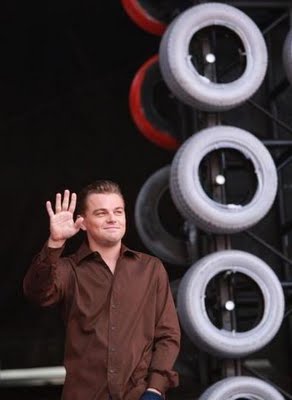
So enjoy Live Earth 2, enjoy Leonardo DiCaprio telling us what car we should drive, enjoy being less bad. I will be avoiding these self-congratulatory circle jerks and other back-patting or finger-pointing events and meetings in order to draw up some new plans about impacting real change that is so desperately needed. I will take care of this, I wouldn't want all y'all to be inconvenienced.
- Archytype, July 26th 2007, 13:00 EDT

